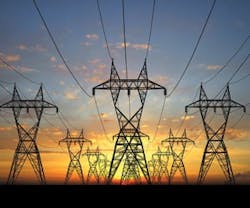Pump power back into the grid and get more than just the feel-good “Go Green” effect – get green in your pocket too.
The LEED Pilot Credit Library recently updated its program for demand response, a strategy in which buildings curtail energy consumption for emergency or economic reasons, either when the power grid is compromised or pricing fluctuates. Those participating in the program earn compensation incentives.
“People are incredulous that they’ll get paid to not use energy, but it’s cheaper for the utility to pay you to use less than to have to generate more,” says Jeff Lipton, field marketing manager for the Western region of EnerNOC, an energy management company that provides demand response curtailment strategies. “The unique nature of electricity is that supply and demand have to be in instantaneous balance at all times.”
If generating more power means constructing a new power plant, it’s particularly expensive, says Brendan Owens, USGBC vice president of LEED, adding demand response uses existing assets to accomplish the same thing.
Perhaps the incredulity about demand response is related to the notion that people don’t necessarily have a solid understanding of how energy works, says Owens.
“Not a lot know where energy comes from or how it gets to them. No one really thinks it’s all that important,” he says. “But this is a completely backwards way of thinking about the design, construction, and operation of buildings.”
That’s why, through the demand response credit, Owens and LEED encourage a more integrated relationship between buildings owners and the power companies that supply their energy, allowing focused and robust conversations to take place.
Because there are synergies that are currently disconnected, USGBC is asking what it can do with LEED to encourage design and operation teams to take advantage of this gap, explains Owens.
Manual Demand Response Removed
Since LEED began pilot testing for the demand response credit almost two years ago, 27 projects have earned the point and 55 are going through the registration process, says Owens.
In a recent update, the credit’s language has undergone comment and review, and a number of organizations contributed, including the Demand Response Research Center, Environmental Defense Fund, Peak Load Management Alliance, Schneider Electric, and EnerNOC. The final publication will be incorporated into LEED 2012, says Owens.
The refined program removes manual demand response. Only programs with either on-site or remote-dispatch automation earn the point. Allowing the utility to directly automate curtailment results in increased reliability, says Lipton.
Though building owners were initially comfortable with only manual demand response, Lipton says automation won’t disrupt operations.
“It’s not like the utility flips your master breaker and shuts everything down. They only shut off the things you decided would make sense to shut off in the case of an event. You’re never at the total mercy of the utility,” he says, adding most programs allow opting out.
Looking Ahead
LEED is taking proactive initiatives beyond the credit in order to spark involvement, Owens says. One of these is partnering with a utility in concentrated efforts to get all LEED buildings in the utility’s service area to sign up for and participate in demand response programs.
“We want to be able to say what can happen when 1,000 buildings in an area all march in the same direction,” he says.
The credit is only the beginning phase, just the tip of the iceberg, Owens adds.
“We’re operating on our side of the grid with scalpels, and there is a chainsaw opportunity on the other side that we are completely missing,” he says. “There’s a win here for the generators and grid operators, there’s obviously a win for the buildings, and there’s a win for the community and the environment.”
There is a lot of excitement about the direction demand response is heading and potential contributions it could make.
“The promise of the smart grid is underutilized at this point, and demand response is a relatively unknown piece of the puzzle,” Owens says. “We’re excited to be bringing this conversation to our core constituency of LEED building users, but also to be building bridges and connecting dots where more of this work can occur.”
Chris Curtland ([email protected]) is assistant editor of BUILDINGS.
